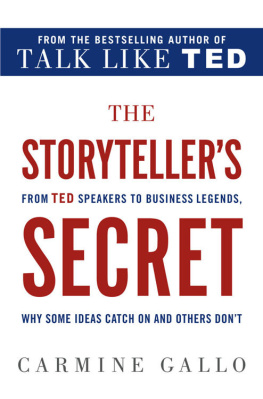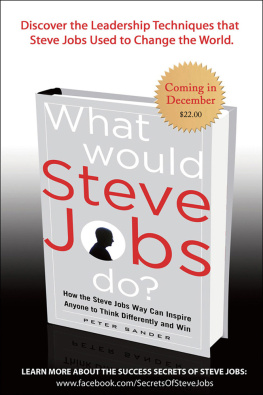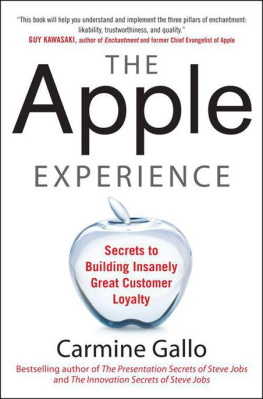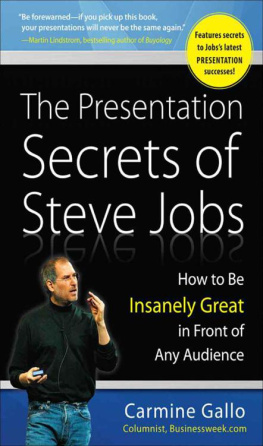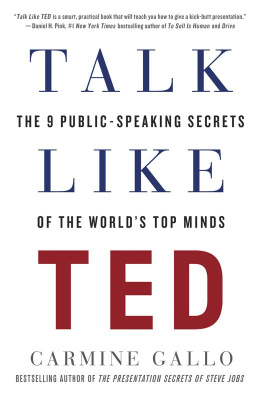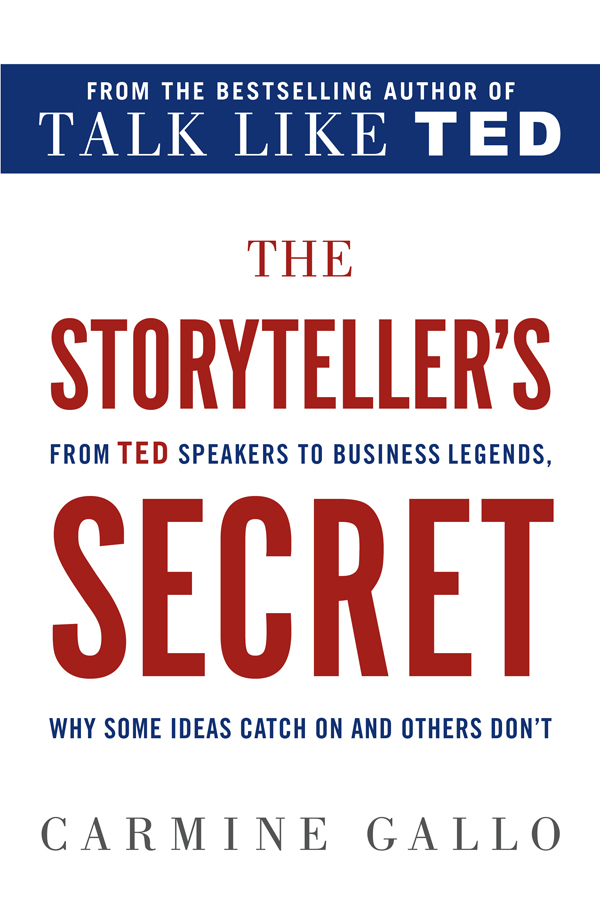Contents
Guide
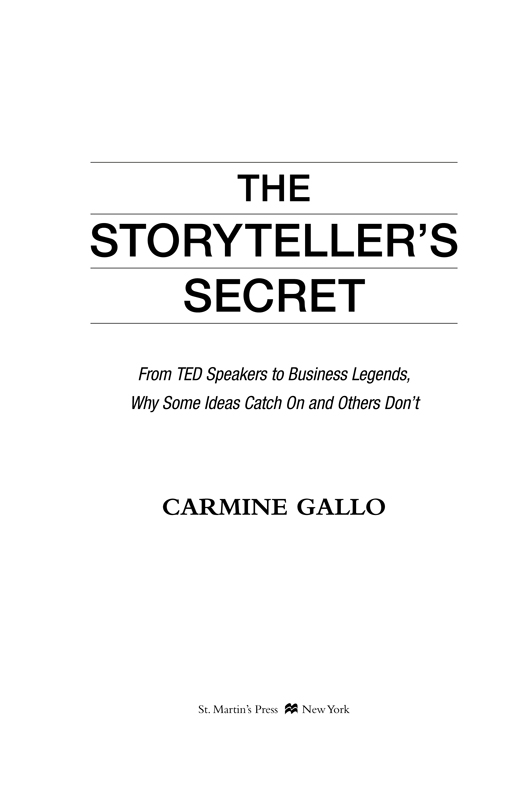
The author and publisher have provided this e-book to you for your personal use only. You may not make this e-book publicly available in any way. Copyright infringement is against the law. If you believe the copy of this e-book you are reading infringes on the authors copyright, please notify the publisher at: us.macmillanusa.com/piracy.
To Vanessa,
For believing in us
I cant thank the team at St. Martins Press enough for their support of this project. Executive Editor Tim Bartlett offered invaluable insights and comments to guide the creative process. Editorial assistant Claire Lampen made the entire process run smoothly, and for that Im grateful. Its been a joy to work with the entire team at St. Martins Press including Sally Richardson, George Witte, Laura Clark, and everyone from publicity and promotion to editing and design. Thank you for bringing The Storytellers Secret to life.
Roger Williams has always been more than a literary agent. Im thankful for his mentorship, guidance, and unwavering enthusiasm.
My speaking agents Tom Neilssen and Les Tuerk, along with the entire team at BrightSight Group, play an invaluable role in helping me share this content with groups around the world. They deserve special thanks and recognition.
Mark Fortier and Norbert Beatty at Fortier PR, our outstanding publicists who I turn to for guidance. Thank you for your valuable partnership.
Carolyn Kilmer, community manager and design expert at Gallo Communications Group, is an important part of our team and she does a magnificent job of extending our content far and wide.
My wife, Vanessa Gallo, believes in the story we have to share and works tirelessly to manage Gallo Communications. She also takes a leadership role in our daughters school by volunteering as president of the Parent Teacher Group. Its inspiring to watch her apply our storytelling content to the field of education. Vanessa is my guiding light.
As always, special thanks to my family for their support: Josephine, Lela, Tino, Donna, Francesco, Nick, Ken, Patty, and my mother, Giuseppina. My father, Francesco, is no longer with us, but his story of struggle and triumph has always shaped my view of the world. My dads story gave me permission to dream.
I was lying flat on my back.
I had slipped on a sheet of ice outside of my 500-square-foot apartment in western Wisconsin. The thermometer hit zero that morning20 degrees colder if you counted the windchill. I had torn my only suit, an expensive Italian outfit I had proudly purchased in San Francisco a few days earlier before getting in my car and driving 2,000 miles to take my first television job as a morning news anchor.
As I was lying on the sidewalk in the early morning freeze, looking up at a decaying apartment complex in the worst part of town, a number of questions raced through my mind: Had I made the right decision to give up law schoolthe safe choiceto pursue my passiona career in broadcast journalism? Would I be stuck making $15,000 a year for the rest of my career? Would my father, who had landed on these shores as an Italian immigrant with $20 in his pocket after World War II, have been proud of my decision, or would the former prisoner of war have felt that his son was squandering an opportunity to make it in America?
I didnt have an answer to all of my questions at the moment, but I reached two conclusions. First, its best to buy two-for-one suits, preferably at a discount, if you can barely afford to pay your $400 monthly rent. Second, that following my passion would be really, really tough, even harder than the ice I had just cracked with my head. And with that I got up, picked up my papers, now stuck on the frozen pavement, wiped the snow off my suit, and continued on my way to work. I wasnt prepared for the Wisconsin winter, but I was prepared to face whatever obstacle would come next because, ultimately, you dont choose your passion; it chooses you.
Twenty-five years later I found myself asking the question again: Why am I here? In May 2014, I had been invited to speak at an exclusive gathering of entrepreneurs and CEOs attending the Khosla Ventures Summit at a resort at the foot of the Golden Gate Bridge in Marin County. The events host, billionaire venture capitalist Vinod Khosla, had personally invited me, though initially, I couldnt see why. The other speakers included Bill Gates; Google founders Sergey Brin and Larry Page; Salesforce CEO Marc Benioff; former secretary of state Condoleezza Rice; and former British prime minister Tony Blair. During an elegant dinner on the first night of the conference, as I felt like the only person in the room who needed an introduction, I began to question my role at the event: Im not a billionaire. I havent eradicated smallpox. Or run a country. Why am I here?
But Khosla immediately put me at ease when he took the stage. Addressing the entrepreneurs in the audience he said, Youre all brilliant, which is why I invest in you, but many of you cannot tell an emotional story, and thats why I invited Carmine Gallo to speak to you.
On the one hand, it struck me as I looked around the room that every person there was already a storyteller. In fact, I had written about the more famous ones and their effective communication styles. And the impressive young entrepreneurs in the audience were all storytellers, too. Some were more effective than others, but they all had to learn to tell a story if they hoped to change the world with their ideas. In fact, the ones who stood out knew intuitively what neuroscientists and researchers are just beginning to understand: One emotional and vivid customer story is far more persuasive than a data dump in 85 PowerPoint slides. A person can have a great idea, but if that person cannot inspire others to buy into that idea, it doesnt matter.
What struck me even more as I interacted with that group was the degree to which the most successful entrepreneurs and thought leaderspeople who are already in many ways master communicators, many of who seem like born storytellerswere hungry to learn more about this most elementaland crucialpart of presenting ourselves, ideas, and businesses. They realized the exponential potential of even incremental improvements.
At the time of the Khosla event I had been thinking about the subject of my next book. I had been on the speaking circuit promoting Talk Like TED, which unlocked the presentation secrets of the worlds great thinkers and entrepreneurs who have dazzled their audiences on a TED conference stage. As I made my way around the country talking about the book, I found again and again, no matter who the audience was or where I was speaking, that one chapter seemed to resonate most strongly: how the best TED speakers master the art of storytelling; how great stories seemed to be the foundation of all great communication. As I engaged in back and forth with my audiences, I realized as never before that storytelling held the key not only to the perfect TED talk, but also to the larger mission of realizing ones potential.
And it wasnt just while I was promoting my book; I found the subject of storytelling coming up in a range of other contexts. When I interviewed the famed venture capitalist Ben Horowitz, he noted that among entrepreneurs, storytelling is the most underrated skill. Richard Branson wrote a blog post on how storytelling can be used to drive change. On a plane flight I sat next to a sales professional for Salesforce who said, We have a new way to capture customer testimonials on video, but were struggling with how to use those endorsements to tell a story. On another plane flight, this time to Paris, I met a manager with the global tech giant SAP, who told me, My company just hired a new marketing manager. Her title is Chief Storyteller. While my company is simplifying its story on a macro level, Im struggling to simplify my story in PowerPoint. Weve been told that no presentation must last more than a TED-like eighteen minutes.


